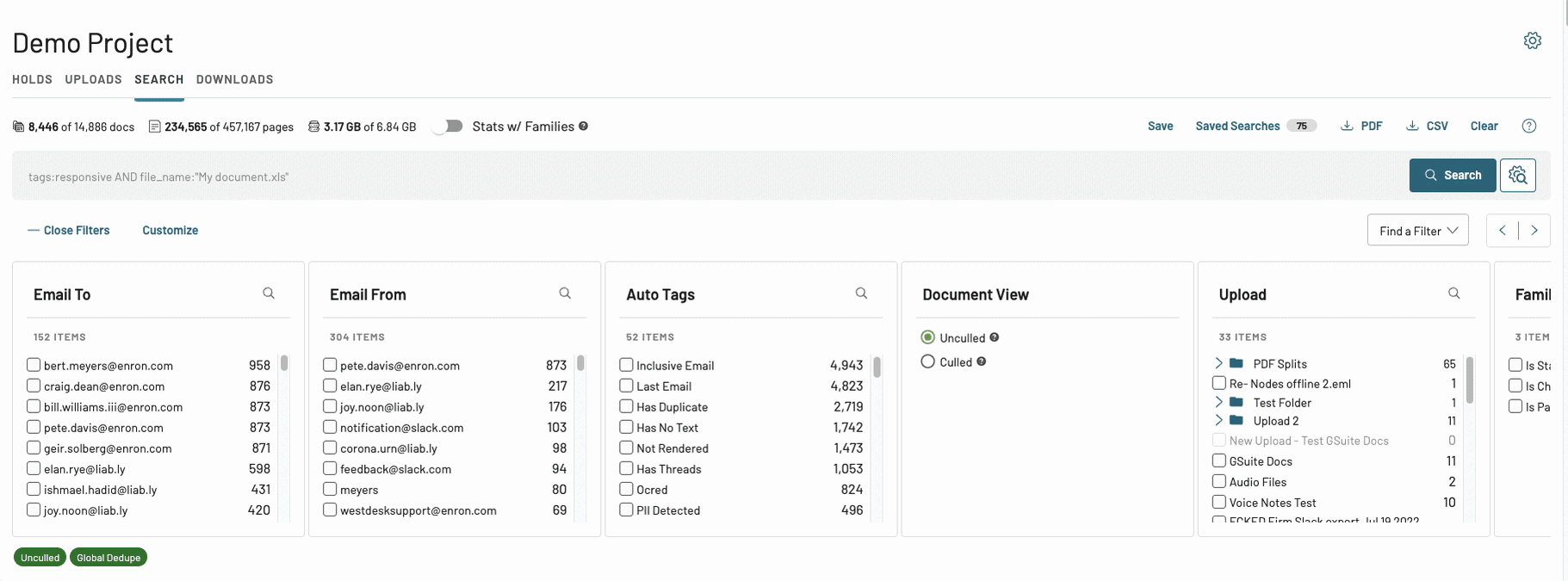
Logikcull Suggested Tags: Complete Buyer's Guide
Mid-market approach to AI-powered privilege detection
Logikcull Suggested Tags represents a mid-market approach to AI-powered privilege detection, emphasizing simplicity and accessibility over enterprise-grade complexity for legal professionals seeking streamlined document review workflows.
Market Position & Maturity
Market Standing
Logikcull occupies a distinctive mid-market position in the AI privilege detection landscape, positioning itself as democratizing eDiscovery AI through simplified access rather than maximizing AI sophistication [44].
Company Maturity
Market maturity indicators suggest Logikcull has achieved operational stability with established customer base and proven platform reliability.
Growth Trajectory
The platform's ability to eliminate 'big discussions around budget and timelines' indicates mature pricing models and predictable implementation processes.
Industry Recognition
Industry recognition appears through customer satisfaction metrics, with users consistently highlighting interface usability and support quality.
Strategic Partnerships
The company's strategic positioning as an alternative to 'complex and pricey' traditional TAR tools reflects market awareness and competitive differentiation strategy [41].
Longevity Assessment
Long-term viability assessment suggests moderate confidence based on established market position and customer satisfaction.
Proof of Capabilities
Customer Evidence
Baker Donelson Law Firm provides the most substantive customer evidence, with attorneys reporting that eDiscovery has become 'less of a burden' with Logikcull [56].
Quantified Outcomes
The firm achieved significant adoption increases and month-over-month growth following implementation [56].
Case Study Analysis
The law firm specifically praised Logikcull's ability to 'significantly reduce the time and energy needed to get an eDiscovery project started' [56].
Market Validation
Customer satisfaction metrics consistently demonstrate platform effectiveness, with users highlighting 'easy tagging, great filters' [49].
Competitive Wins
The platform's integrated approach eliminates separate AI tool licensing and reduces implementation complexity that often drives enterprise AI costs.
Reference Customers
Baker Donelson Law Firm provides substantive implementation evidence [56].
AI Technology
Logikcull Suggested Tags employs a sophisticated hybrid architecture combining rule-based methodologies with machine learning [44].
Architecture
The system's explainable AI implementation represents a critical technological differentiator, addressing transparency requirements through confidence scoring and explanatory tooltips [44][50].
Primary Competitors
Enterprise platforms like Relativity aiR for Privilege or Consilio PrivDetect.
Competitive Advantages
Logikcull emphasizes accessibility and implementation simplicity [44].
Market Positioning
Logikcull focuses on democratizing eDiscovery AI through simplified access rather than maximizing AI sophistication [44].
Win/Loss Scenarios
The platform wins against enterprise alternatives when implementation simplicity, rapid deployment, and cost control take priority over maximum AI sophistication.
Key Features

Pros & Cons
Use Cases
Featured In Articles
Comprehensive analysis of AI Privilege Risk Detection for Legal/Law Firm AI Tools for Legal/Law Firm AI Tools professionals. Expert evaluation of features, pricing, and implementation.
How We Researched This Guide
About This Guide: This comprehensive analysis is based on extensive competitive intelligence and real-world implementation data from leading AI vendors. StayModern updates this guide quarterly to reflect market developments and vendor performance changes.
58+ verified sources per analysis including official documentation, customer reviews, analyst reports, and industry publications.
- • Vendor documentation & whitepapers
- • Customer testimonials & case studies
- • Third-party analyst assessments
- • Industry benchmarking reports
Standardized assessment framework across 8 key dimensions for objective comparison.
- • Technology capabilities & architecture
- • Market position & customer evidence
- • Implementation experience & support
- • Pricing value & competitive position
Research is refreshed every 90 days to capture market changes and new vendor capabilities.
- • New product releases & features
- • Market positioning changes
- • Customer feedback integration
- • Competitive landscape shifts
Every claim is source-linked with direct citations to original materials for verification.
- • Clickable citation links
- • Original source attribution
- • Date stamps for currency
- • Quality score validation
Analysis follows systematic research protocols with consistent evaluation frameworks.
- • Standardized assessment criteria
- • Multi-source verification process
- • Consistent evaluation methodology
- • Quality assurance protocols
Buyer-focused analysis with transparent methodology and factual accuracy commitment.
- • Objective comparative analysis
- • Transparent research methodology
- • Factual accuracy commitment
- • Continuous quality improvement
Quality Commitment: If you find any inaccuracies in our analysis on this page, please contact us at research@staymodern.ai. We're committed to maintaining the highest standards of research integrity and will investigate and correct any issues promptly.